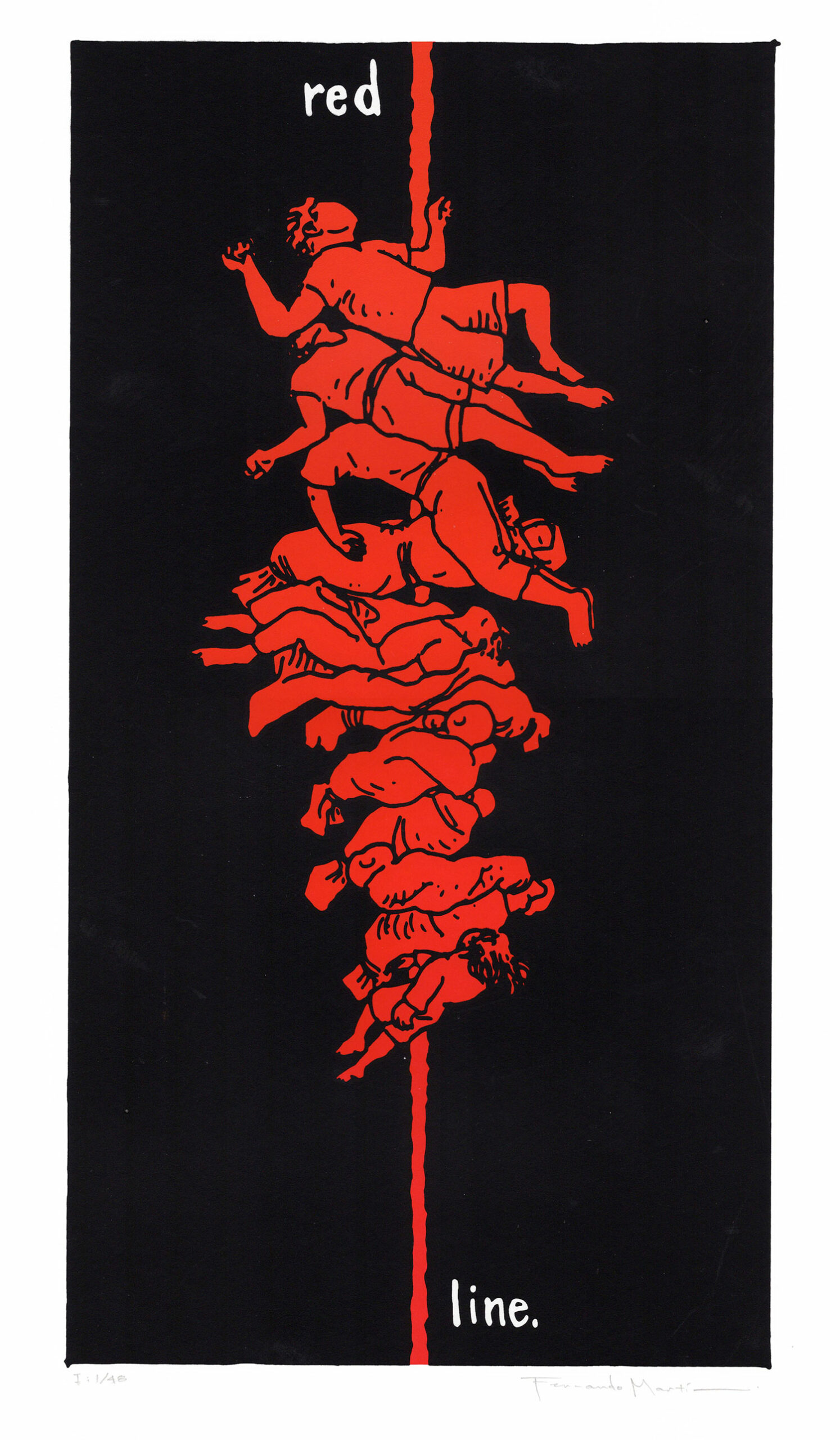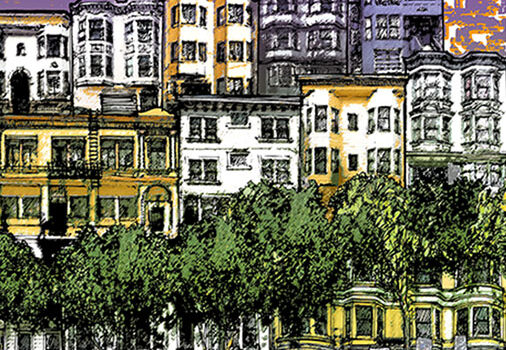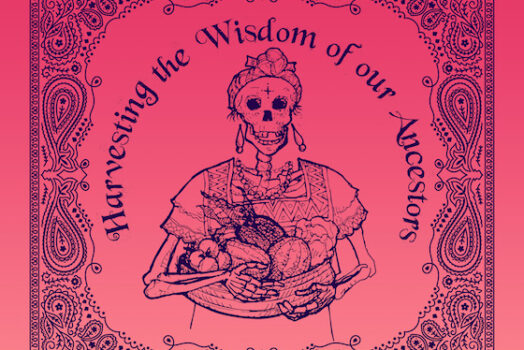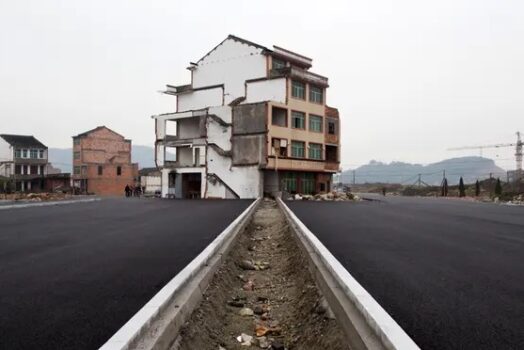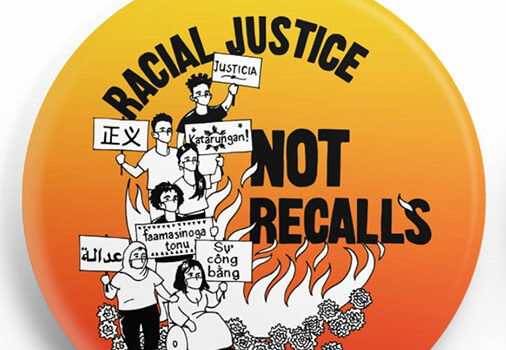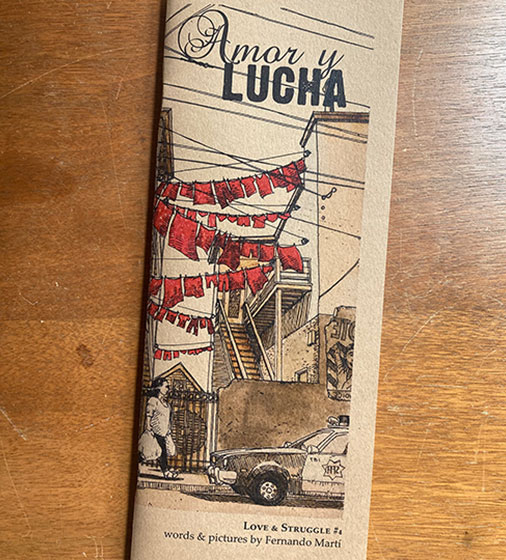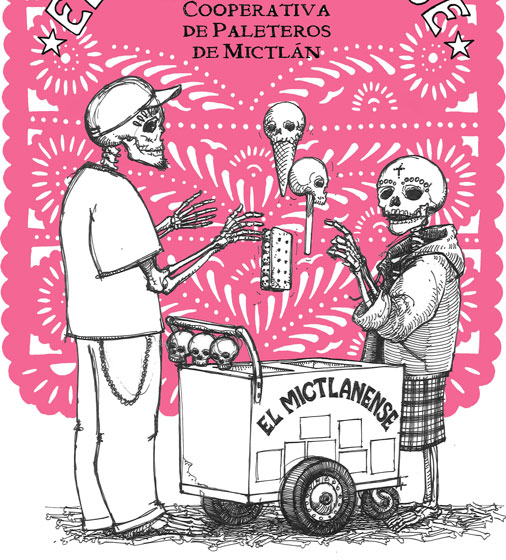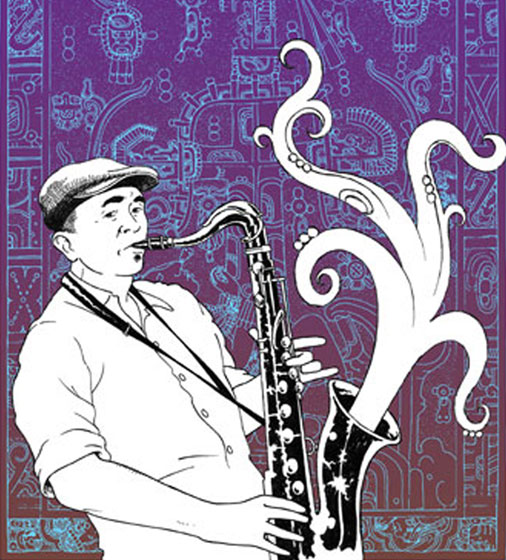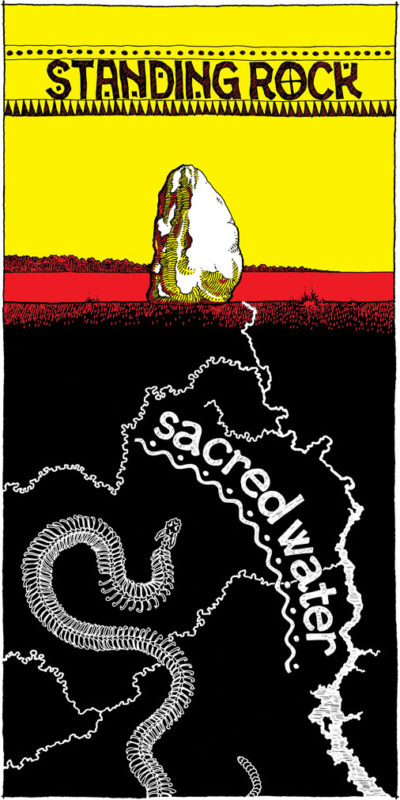My justseeds comrade Jess asks me, “What inspires your art?” We’ve been brainstorming ideas for a children’s picture book, with murals as a kind of portal connecting children between places and times.
I think of the words and pictures and objects that we create as artists, as a surface between the interior and the exterior where the two worlds meet and communicate, or perhaps as a new dream/location/place created inside that intersection. What inspires me is observing how others struggle with the world, with being in the word, and with acting upon an unjust world. In these last fifteen months, nothing has inspired me more than the images from Gaza – not just the brutality of genocide unfolding before our eyes – but the beauty and creativity and humor of people facing this horror and trying to communicate it to the world. My instagram explore feed bounces back and forth between news from Gaza and art for Palestine, and then bunny videos and David Bowie videos. Bisan Owda reporting from the front lines, Renad from Gaza giving cooking demonstrations from a tent, Emad Yousfe and Aborjelaa cooking big pots of lentils in the camps, Noor Nassar with her traveling art class, Fadel Nabhan feeding stray cats, and Mahmoud Kamel and Emad Ghaboun and Farah Obaada, these are my heroes.
Even when I’m teaching a housing class or creating new works for a tenant rights organization, my thoughts keep going back to Gaza. At the beginning I feel frozen, unable to translate the enormity of what we are seeing into art, instead throwing into providing security at protests.
Over the summer I finally gather ideas from my sketchbook to produce a series of screen prints for Gaza. They are sold to raise funds for the Gaza family of the owner of one of my regular cafés in the Mission, and for AROC and PYM. The hopeful prints sell; the one of shrouded bodies does not, but I have to make that one too. Don’t look away.
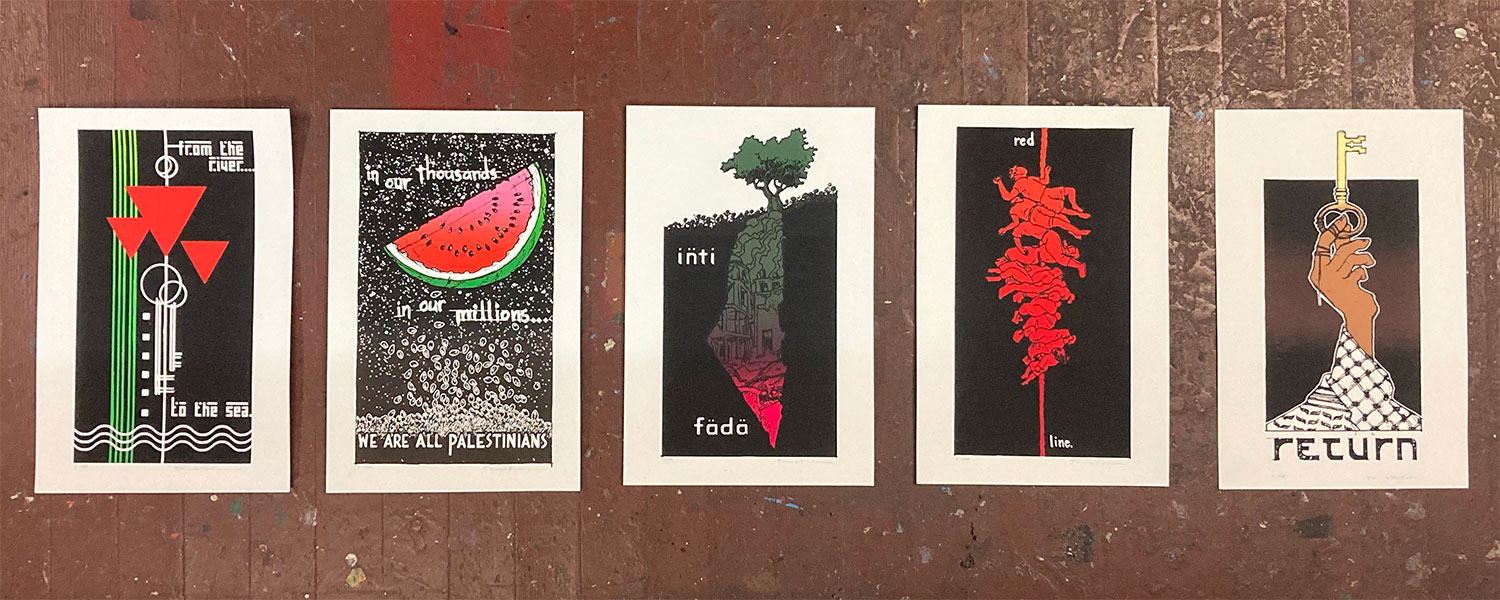
Jess X. Snow and I collaborate on print for the justseeds CSA, focusing on the hopefullness of kites in Gaza. I’m reminded of the words of a Palestinian activist, who has already lost so many family members in Gaza: “They cannot kill our joy.”
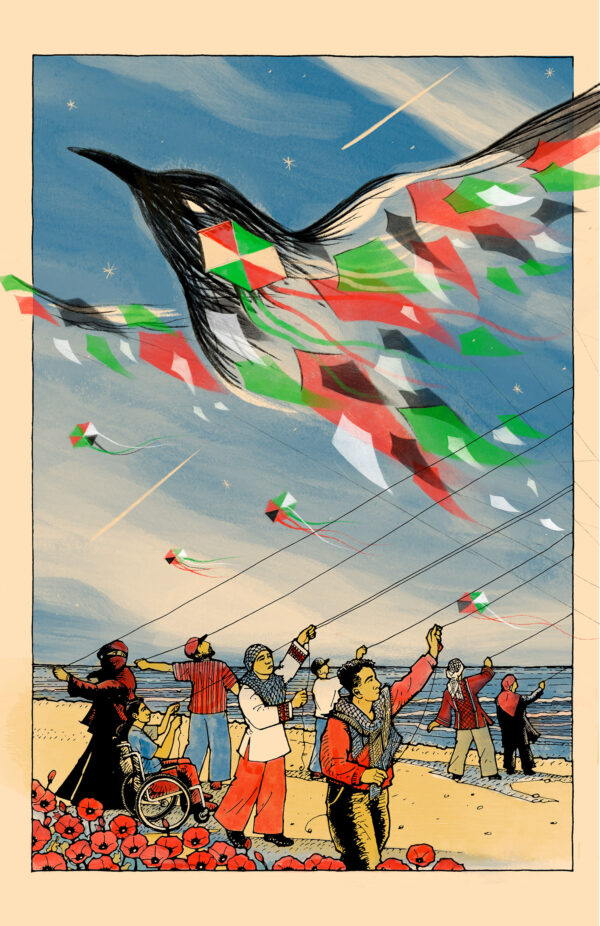
Some friends start a Bay Area printmakers for Palestine group, and we are able to print at a teach-in at a local high school and at the encampments at SF State in the Spring, and at the student orientation in the Fall. The Secret Garden in the Mission, on sunny Saturdays under the plum trees, becomes a people’s workshop.
With AROC, we pull together a group of activists and artists to envision images for the October mobilizations. We want strong images, images of hope.

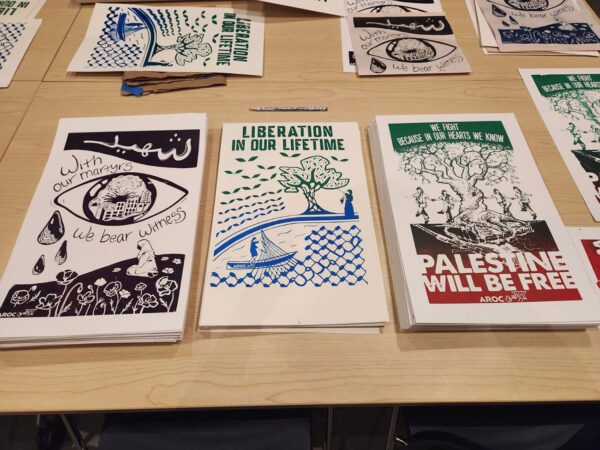
This is the piece I make.
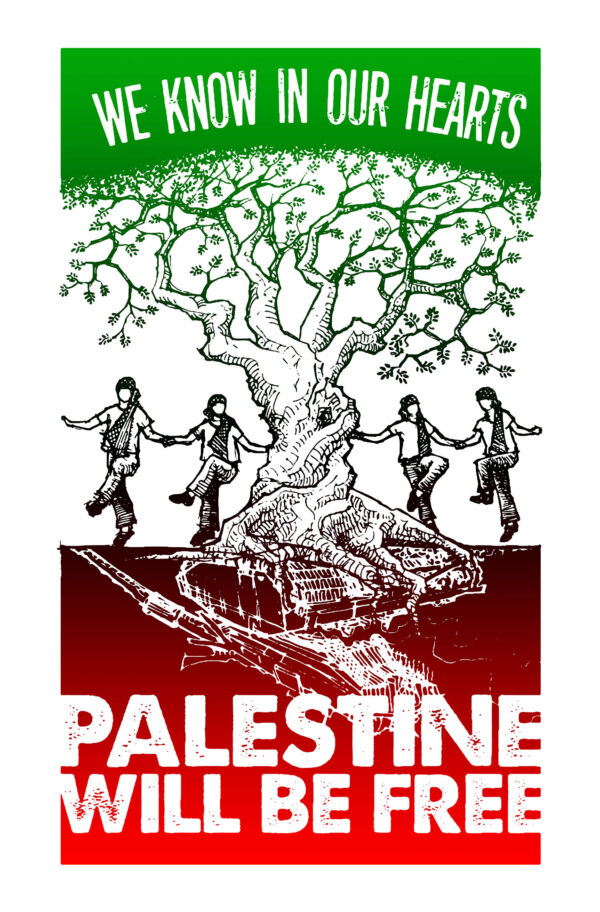
At the cultural center where I work part-time, we are invited to a city arts commission event on “freedom of expression.” Cece Carpio creates a sidewalk mural for Gaza in front of the gallery. We do a live screen printing in the lobby, with an image I create drawing out the solidarity between the resistance of colonized Latinx peoples and the resistance to Zionist colonization in Palestine.
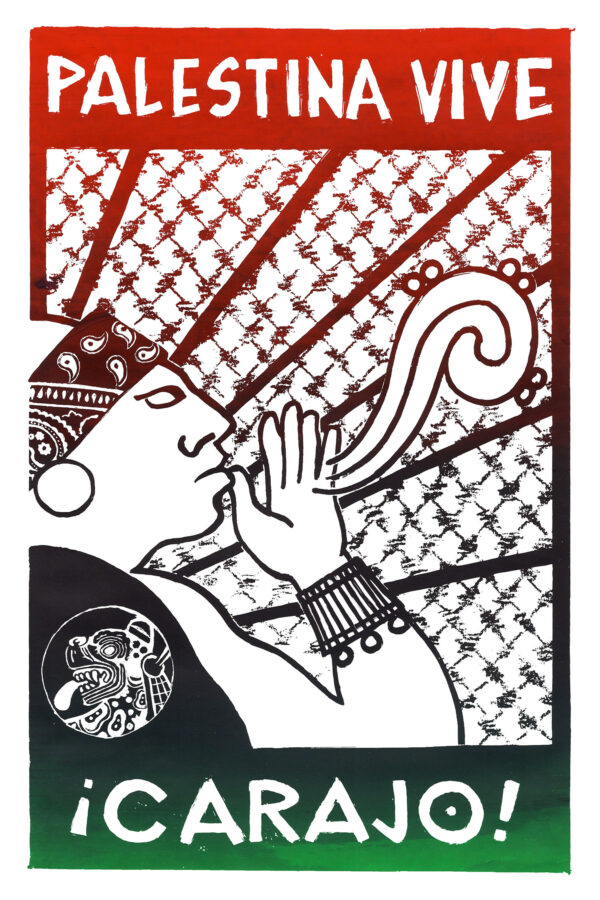
For Día de los Muertos, I create an altar with the cultural center staff. We focus on artists and poets killed in the genocide, place their words on the altar. We run the names of the 40,000 dead on a continuous loop on a tablet. The base of the altar is a map of Palestine made with moss, whole and living, surrounded by smooth river stones, from the river to the sea, and keys to the homes and villages destroyed and taken from Palestinians in the Nakba. The broken hands of the martyrs hold mirrors, reflecting back on ourselves. There is water for the thirsty, salt for purification, and bakhoor for burning. Our offerings include toys and jewelry for the children; cardamom coffee and a dallah; and, of course, olive oil, olives, za’atar, sage, roses, pomegranates, oranges – the herbs and fruits of Palestine – that they may find comfort in the foods they shared with their families. We struggled with counting the enormity of the dead: in the end we opted for a running list of the names of 40,000 martyrs identified by the Gaza Health Ministry. The flag is roughly made, as if made at home, under an occupation, despite it all. The sky above the altar is filled with white kite tails, billowing like body bags, gauze-like, like the fabric that comes from Gaza. May they know peace. May we find the strength to stop this.
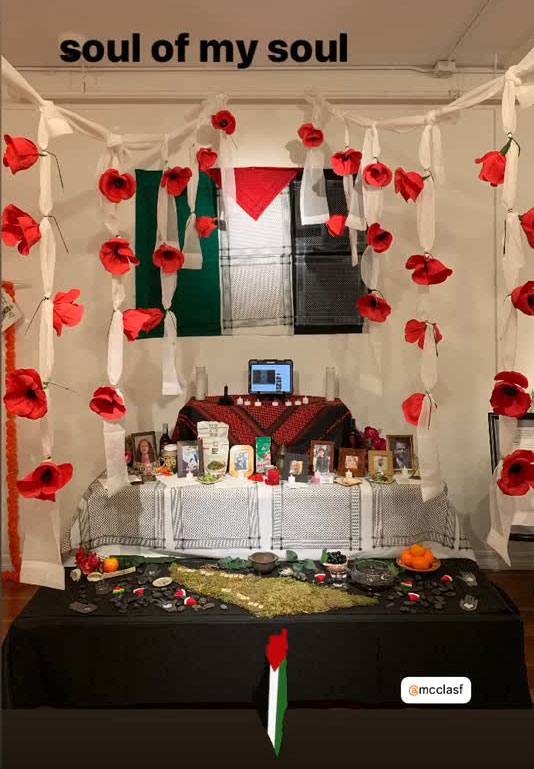
In December, I finally find time to compile writing and art from the last year for a new zine. This is my sixth Amor y Lucha, and this one is entirely Palestine. The cover is a print I created in 2014, with images of resilience and resistance: olives, keys to home, a slingshot, over a (colonizer) map of Palestine from 1914, showing the erased Palestinian villages. The rest is all work from the last fifteen months, circling back to the nagging question: what can we do, here in the heart of Empire, in the face of this devastation?
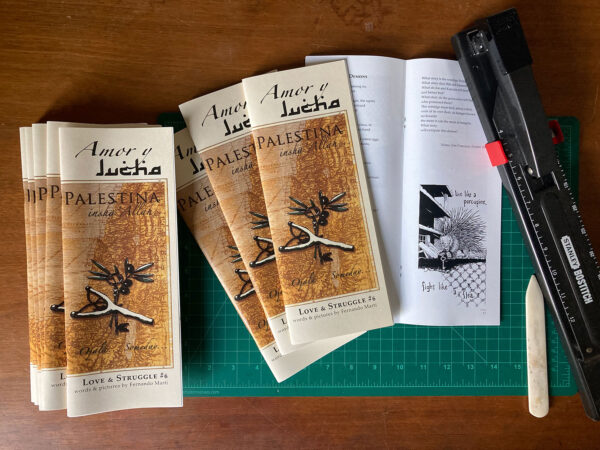
If we are constantly surrounded by so many injustices, so many genocides (Srebenica, Rwanda, Darfur…), this one feels so close at home because “we” created it, “we” funded it, and “we,” this country I now call home, cannot find the moral clarity and courage to end it. Part of me always holds a Marxist analysis – history is not predetermined, but is only the outcome of struggle, and it can go in any direction. But part of what keeps me going is a progressive optimism, a spiritual idealism (Tielhard de Chardin and Paolo Soleri), that humanity is ultimately evolving, that time moves us closer to the divine, that the arc of history does bend toward justice. But all I see at the end of this year, as the country stumbles toward fascism, is a red line that cannot hold.
